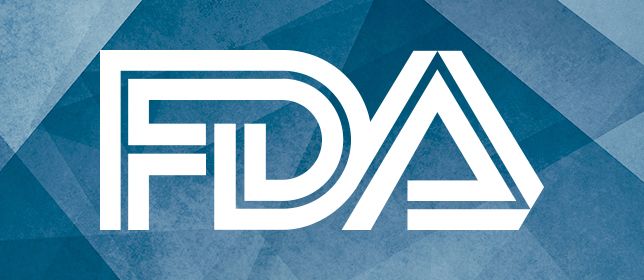FDA sBLA Submission Aims to Expand Axi-Cel Indication to Second-Line Treatment of LBCL
Axi-cel developer seeks to expand Axi-Cel for large B-cell lymphoma application to include the second-line setting.

A supplemental biologics license application has been submitted to the FDA to expand the current indication of axicabtagene ciloleucel (axi-cel, Yescarta) to include the treatment of adults with relapsed or refractory large B-cell lymphoma in the second-line setting, according to a press release by Kite, a Gilead Company.1
Axi-cel is a CD19-directed genetically modified autologous T cell immunotherapy. Currently it holds indications for the treatment of adult patients with relapsed or refractory large B-cell lymphoma after 2 or more lines of systemic therapy and the treatment of adult patients with relapsed or refractory follicular lymphoma after 2 or more lines of systemic therapy.
“Yescarta demonstrated an impressive clinical benefit over the current standard of care in the ZUMA-7 study, and these findings highlight the potential of this transformative therapy to help even more patients,” said Frank Neumann, MD, PhD, Kite’s global head of Clinical Development, in a press release. “Approximately 40% of adult patients diagnosed with LBCL require second-line treatment, and we are committed to working with the FDA to provide a new treatment option for these patients.”
The application is supported by data from the ZUMA-7 trial (NCT03391466). The phase 3, randomized, parallel assignment trial has an actual enrollment of 359 participants and an estimated study completion date of January 15, 2035. The primary end point of the study is event free survival (EFS) up to 5 years. Secondary end points include objective response rate, overall survival (OS), modified EFS progression-free survival, duration of response, adverse events, and quality of life.2
During the study, patients were randomized 1:1 into an experimental or control arm. During the experimental arm, patients received axi-cel. During the control arm, patients received standard of care therapy.
An interim analysis of the study found it met the primary end point of EFS with a hazard ration of 0.398 (P <.001). Additionally, the OS trend favored axi-cel over standard of care therapy. The median follow-up time was 2 years.
In terms of safety, results were consistent with prior axi-cel safety profiles for the treatment of relapsed or refractory diffuse large B-cell lymphoma. Six percent of patients experienced grade 3 or high cytokine release syndrome with a median onset of 3 days. Additionally, 21% of patients experienced grade 3 or higher neurological events. However, no new safety concerns were reported in the second-line setting.
In order to participate, patients must have histologically proven large B-cell lymphoma, relapsed or refractory disease after first line chemoimmunotherapy, no known history or suspicion of central nervous system involvement, an ECOG score of 0 or 1, adequate bone marrow function, and adequate renal, hepatic, cardiac, and pulmonary function. Patients who have received more than one line of therapy for diffuse large B-cell lymphoma, a history of autologous or allogeneic stem cell transplant, known HIV infection, a history of central nervous system metastasis, presence of any indwelling line or drain, history of myocardia infraction, symptomatic deep vein thrombosis, or a history of autoimmune disease are not eligible to participate.
REFERENCE:
Kite submits supplemental biologics license application to U.S. Food and Drug Administration for earlier use of Yescarta® in large B-cell lymphoma. News release. Kite. September 30, 2021. Accessed October 1, 2021. https://bit.ly/3utBN94.
Efficacy of axicabtagene ciloleucel compared to standard of care therapy in subjects with relapsed/refractory diffuse large B cell lymphoma (ZUMA-7). Clincaltrials.gov. Accessed October 30, 2021. https://bit.ly/2Ykw8GJ.
Examining the Non-Hodgkin Lymphoma Treatment Paradigm
July 15th 2022In season 3, episode 6 of Targeted Talks, Yazan Samhouri, MD, discusses the exciting new agents for the treatment of non-Hodgkin lymphoma, the clinical trials that support their use, and hopes for the future of treatment.
Listen
Later-Line CD19 and Bispecific Therapies Considered After CAR T
October 1st 2024During a Case-Based Roundtable® event, Christopher Maisel, MD, discussed third- and fourth-line therapy and barriers to bispecific therapy use in diffuse large B-cell lymphoma in the second article of a 2-part series.
Read More
Participants Discuss LOTIS-2 Data Based on Patient Case of DLBCL
September 16th 2024During a Case-Based Roundtable® event, Christopher Maisel, MD, discussed the data behind loncastuximab and whether participants with use this treatment for patients with diffuse large B-cell lymphoma in the first article of a 2-part series.
Read More
Superior Outcomes With Brentuximab Vedotin Triplet in Diffuse Large B-Cell Lymphoma
September 11th 2024The addition of brentuximab vedotin to lenalidomide and rituximab significantly improved survival and response vs lenalidomide/rituximab alone in patients with relapsed/refractory DLBCL.
Read More